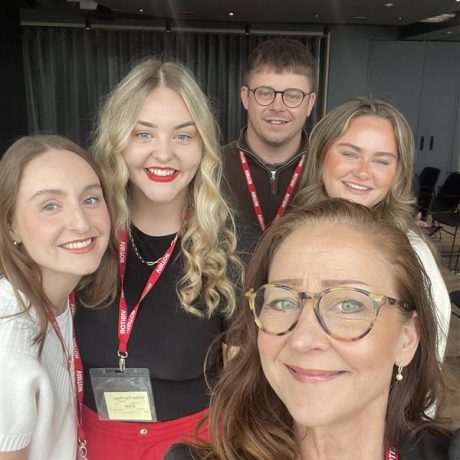Grants remain a vital lifeline for the voluntary sector, whether they come from trusts and foundations or private sector companies. However, we are currently facing one of the most challenging times in recent memory. Grant contributions have decreased dramatically, and many voluntary sector organisations have been forced to shut down projects, or even cease operations altogether.
This moment calls for a fundamental rethink of how grant-making works. We must harness technology not only to reduce the administrative cost of grants but also to improve our understanding of the true impact on the ground. By streamlining the process and ensuring better data collection, we can more accurately evaluate which initiatives genuinely make a difference.
Reducing Barriers: Time and Cost
The burden of applying for grants is often disproportionately high, especially for funding amounts between £1,000 and £50,000. Applicants are required to provide extensive information and documentation, which can take hours or even days to compile. While due diligence is necessary, overly complicated processes present a significant barrier, especially for smaller organisations that have limited staff and resources.
When looking applicants for larger grants, pre-scouting with lighter process is a way to move from the first evaluation step to the next. There is no reason why all applicants are put through a lengthy process when it might be quite easily detected in early stages that they are not meeting the criteria. Again time and money saved for both parties.
What’s needed is a rebalancing of grant-making expectations. Platforms like whatimpact.com demonstrate how grant processes can be streamlined without compromising data quality. Through digital tools that offer structured applications, automated data handling, and scalable performance tracking, it’s possible to make the system fairer and more accessible. This not only benefits grant recipients but also improves efficiency and accountability for funders.
Open, nationwide yet hyper-local platform technology also brings grant-opportunities to the market in a transparent manner. It is not rare that some grant-makers fund the same organisations year after year just because their limited promotional activities are not expanding the reach.
Rethinking Time and Oversight in Grant-Making
A critical and often overlooked area is how much time is spent by both grantees and funders in reviewing, evaluating, and monitoring grants. Oversight committees may spend days reviewing applications and compliance reports. In many cases, administrative oversight consumes 50–70% of a grant’s value, leaving less room for actual delivery and impact.
However, there are proven ways to simplify this. For example, a model trialled in Newport Wales where GOV Shared Prosperity Funds have been shared in large quantities, shows how grant evaluation can be streamlined using structured data and dashboard services.
The same applies to monitoring the impact. At whatmpact.com we use semi-automated grant-reporting system that is internationally recognised. By using AI to compile grant programme reports, the entire impact of the grant-programme can be easily and cost-efficiently evaluated.
Such systems reduce back-and-forth and prevent wasted effort on excessive reporting, while still maintaining transparency and control. Oversight bodies can focus their time on decision-making and strategic evaluation, rather than chasing paperwork and evaluating open ended, non-comparable questions and answers, allowing them to monitor a higher volume of grants with better insight and less resource drain.
Voluntary Sector Needs Unrestricted Funding
The voluntary sector is in urgent need of unrestricted grant funding to support its baseline operations. There is a common misconception that funding only projects is the most impactful way to support beneficiaries. In reality, organisational overheads exist for a reason. When these are underfunded or excluded, it jeopardises the sustainability, safety, and efficiency of service delivery.
Without appropriate administrative capacity, technology infrastructure, and core processes, no project can truly thrive. That’s why at whatimpact, we advocate for small but sufficient overhead allocations in every project budget, and for more funding that is unrestricted—targeting outcomes and scalability rather than focusing on collecting small receipts to justify every penny. Grant-making should empower organisations to focus on achieving meaningful impact, not on exhaustive financial micro-reporting.
The Role of Innovation in Grant Eligibility
Many grant criteria state that innovation is a priority, they seek bold ideas, new models, and experimental approaches. But in reality, there is often unconscious bias that favours more traditional organisations with long track records and familiar project formats.
To truly support innovation, funders need to go beyond paper applications. Incorporating verbal pitches—whether online or in person—allows applicants to explain their approach, their theory of change, and the reasoning behind their proposed model. Even experimental projects can be compelling when there is a clear understanding of the assumptions and intended outcomes.
On the other hand, we must not assume that long-standing projects are automatically impactful just because they’ve been running for years. Times change, and so must delivery models. Grant-makers have a responsibility to ensure that legacy programmes evolve and remain effective in a changing world.
Final Thoughts
Grant-making should not be treated as a one-way transaction. To truly maximise the impact of funding, we must transition toward collaborative systems that prioritise learning, evidence, and flexibility. That means:
· Making application and reporting processes simpler and more proportionate
· Embracing digital tools to reduce administrative burden and increase transparency
· Allowing innovative projects to shine, regardless of their history or format
· Regularly reviewing long-term initiatives to ensure they remain fit for purpose





